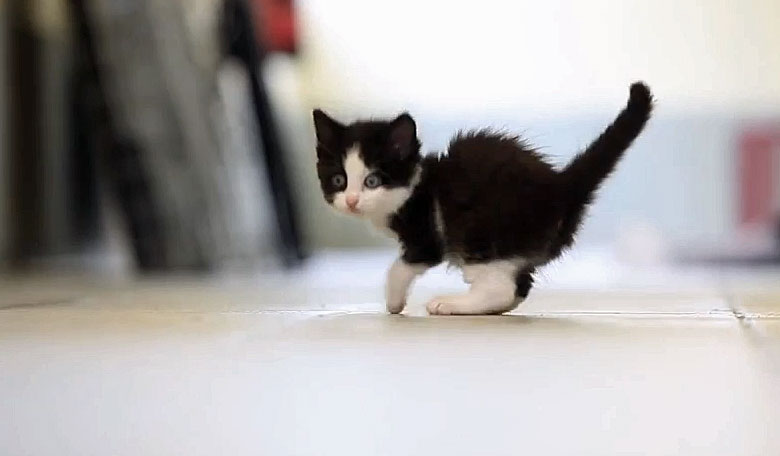While some cats are born with three legs, the majority of three-legged felines find themselves having to adapt to life on three limbs because of a health condition or an injury that led to the amputation of the affected limb.
Expectedly, the loss of a limb does affect normal feline behavior and activity.
But cats are quite ingenious animals and the loss of a limb often doesn’t stop them from living healthy lives.
Provided that the pain associated with the lost limb is gone, cats tend to quickly adapt to losing a leg.
In most cases, they will regain their mobility fast—though they may need some help to live happy, safe, and healthy lives.
If you have a three-legged feline or plan to adopt one, it is important to understand how you can help her cope up with this new situation.
But caring for a three-legged cat is going to be a challenge since the cat will struggle using most standard products.
To make things easier for you, I will highlight some of the most important tools and resources that you may need to give a tripod feline some leg up.
1. Treats and Canned Foods
If your cat just got amputated, he might not have a great appetite during his recovery. The loss of appetite is a common side effect of medication.
The kitty should go back to his usual self as soon when she recovers.
Meanwhile, it might be a good idea to stock up on irresistible treats and canned foods.
Canned foods are usually tasty which is what you are looking for when feeding a cat that has no appetite.
2. Pet-Safe Beverages
Appetite is not the only thing your three-legged cat will struggle with on his road to recovery—he will also struggle with drinking water.
Since fluids are important to his health and wellness, you may want to buy some pet-safe beverages to keep him hydrated.
You can also use the beverages to spike his drinking water.
Related Post: 10 Best Cat Dental Water Additives
3. High Fiber Foods
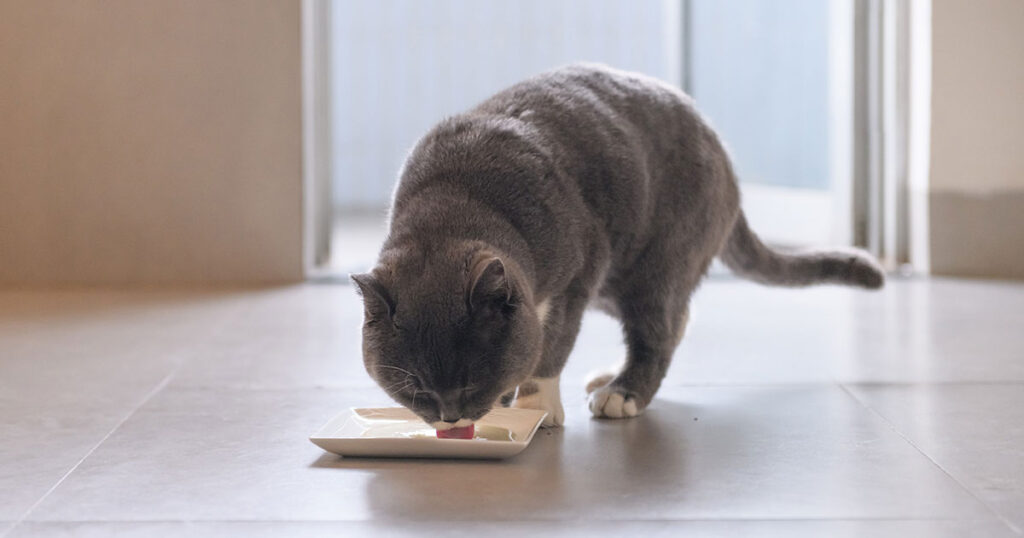
Constipation is common in most recovering three-legged cats. Unfortunately, this is one of the other side effects of medication.
You can make the passing of poo easier for your cat by giving him food that has high fiber content.
Good examples of high-fiber foods include steamed squash, pumpkin pulp, bran flakes, etc.
You can mix up the food with tasty treats to encourage your pet to consume high-fiber food.
4. Pet Step Stairs
Cats have an insatiable desire to rest in elevated places and this doesn’t stop when they lose a leg.
But accessing a high place can be quite an undertaking for a tripod, which is why you should get your kitty some pet stairs.
The stairs will help them to climb and descend without any clumsy accidents.
5. Carpet Runners
A carpet runner is a piece of carpet that runs over the staircase.
If your cat is three-legged, you should pave your stairs with a carpet runner to make it easier for your pet. This makes the stairs less slippery and therefore easier for them.
You could also pave any other area your cat likes to travel on.
6. Recycled Newspaper Litter
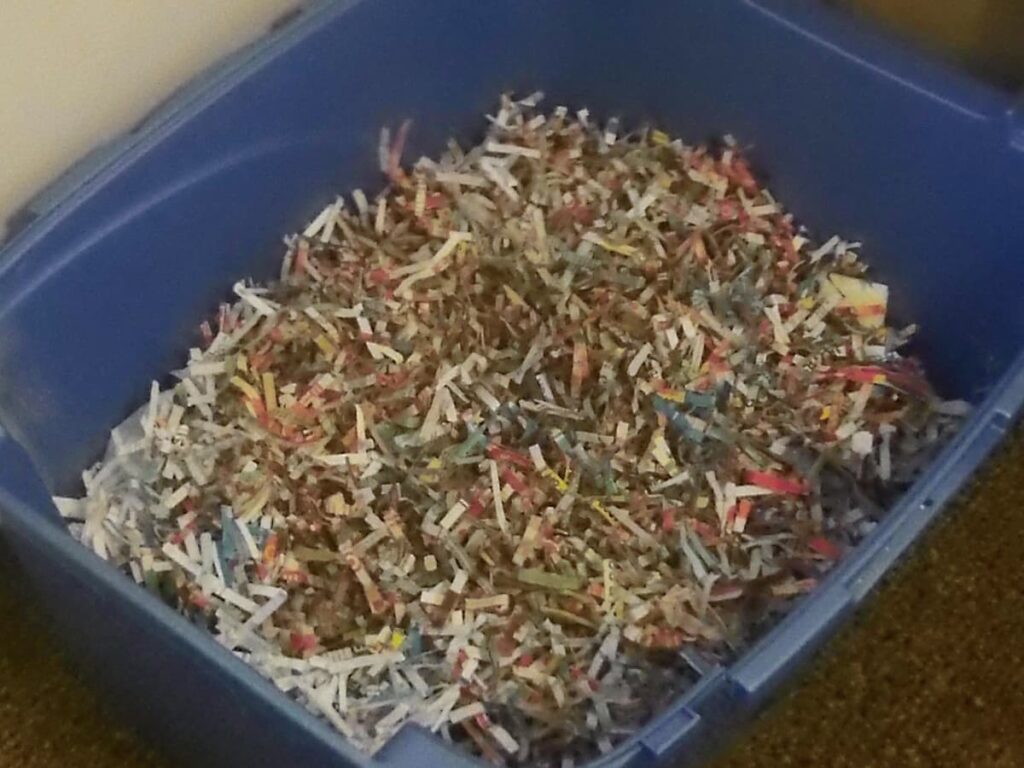
Cats always cover their pee and poop, so you want to make it easier for your three-legged kitty by using soft litter.
Recycled newspaper litter is perfect for this scenario.
Not only will it absorb the urine well but it is easier for your cat to kick and cover.
7. No-Slip Rugs
As you can imagine, traction is a huge challenge for three-legged cats, especially if the amputation was recent.
Providing no-slip rugs can help restore confidence to your cat to start walking again.
You must cover the entire floor—just enough to create a comfortable path for the cat.
8. Extra Towels, Sheets, And Blankets
Even though it is rare, the cat might experience some bodily fluid leakage at the point where the leg was amputated. This is referred to as Seroma.
It is not a health hazard but it can be messy and inconvenient.
The best way to deal with this is to be proactive by providing extra towels, sheets, and blankets.
Cover your pet’s bed and wipe him with a clean towel.
Seroma shouldn’t scare you because it will eventually stop on its own.
9. Use A Baby Gate
Walking on three legs can be a clumsy experience for any kitty.
It might therefore be a good idea to install baby gates or any other confinement methods to restrict their movement to a smaller area.
You want to prevent excessive activity and movement around the house as that will increase the chances of an accident that might harm them.
10. Puppy Pads

Three-legged cats can struggle with elimination, especially if they are still on medication.
If the cat starts eliminating on the doormat or the floor, it could be an indicator that he is struggling and is looking for a flat place.
You can solve this by providing a potty pad.
You can use a puppy pad and fix the edges to make sure it doesn’t crumble when the pet walks on it
11. Modified Litter Box
After a cat’s leg has been amputated, it might be hard for him to access his usual litter box.
You may want to modify the litterbox to make it easier for them.
A cat with limited mobility will want to have an entrance and a different exit to the litterbox so you may want to make such a provision.
You will want to keep the walls low but remember to use floor protectors (e.g. an old towel) to avoid a mess.
Also, avoid using pellet litter as that might be too slippery for them.
12. T-Shirts And Boxer Shorts
Adorning your pet in small t-shirts and boxer shots can discourage him from licking the place of the incision.
If he keeps licking his wound, it might not heal as quickly.
You can also buy baby onesies that are designed for cats.
Any clothing that will prevent the cat from pulling the stitches or tampering in any way with the incision is always a good idea.
13. Orthopedic Pet Bed
A three-legged cat needs a firm mattress.
While a big and fluffy bed might appear cozy, a new amputee might struggle with getting comfortable in it.
The cat needs a firm mattress to make it easier for him to move and roll around the bed.
14. Hot Cold Compress
As your pet recovers from the amputation surgery, he might bruise his wound which might result in swelling.
This is normal and it shouldn’t scare you as you can easily manage it at home with a hot or cold compress (heat and ice therapy).
The hot or cold compress will alleviate the pain and help the cat heal quicker.
15. Harness
Harnesses are commonly used for dogs but they can be a great tool for pet parents with three-legged cats.
The harness can help you to safely take your cat up and down your stairs or walk him on a slippery floor.
Make sure to get the right size and you may also want to wait until the stitches come out before you use a harness.
16. Cone of shame
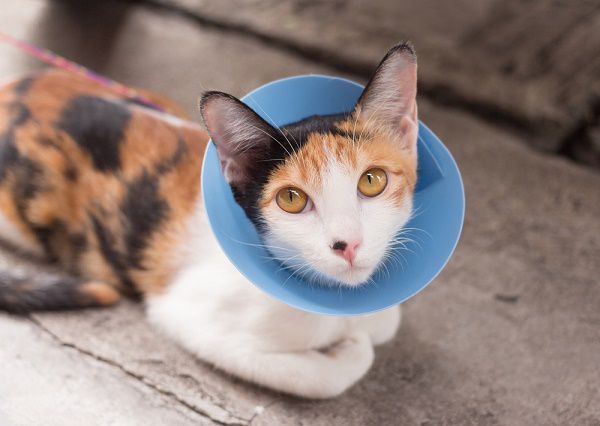
The easiest way to keep your cat from licking his wounds is using a cone of shame.
Cats, like most animals, have an innate desire to gnaw, chew or lick any area they feel pain.
It’s the same way humans can’t resist the urge to scratch an itch.
Even though it is uncomfortable and inconvenient for the cat, the cone of shame will stop the cat from making the wound worse so it’s a small price to pay.
Related Post: 8 Best Recovery Suit for Cats
17. Raised Feeder Station
Cats, like most other animals, love eating while standing.
But when your cat has only three legs, it can be an uphill task to balance while feeding. This is where a raised feeder comes in handy.
A raised feeder will help your cat to maintain posture and stability and thereby give it a better feeding experience.
If the cat struggles with eating, he might give up completely especially since their appetites are not the best when they are recovering from surgery.
18. Ramps
Cats on their fours love stairs because they love jumping around.
But a three-legged cat will have mobility issues and going up and down the stairs can be a hurdle.
Installing a ramp can make their life way easier.
Once you get a ramp, you might need to train your cat to use it cats are smart and will adapt quickly.
19. Pill Gun
Administering medicine to pets can be quite an undertaking.
There are lots of interesting hacks but the best solution is to get a pill gun.
Just load up your gun with the pills, insert in the mouth point to the throat and press the plunger.
A pill gun administers the medicine safely, surely, and efficiently.
You could also try out pill paste and greenies as they work just as great too.
20. Cat sling
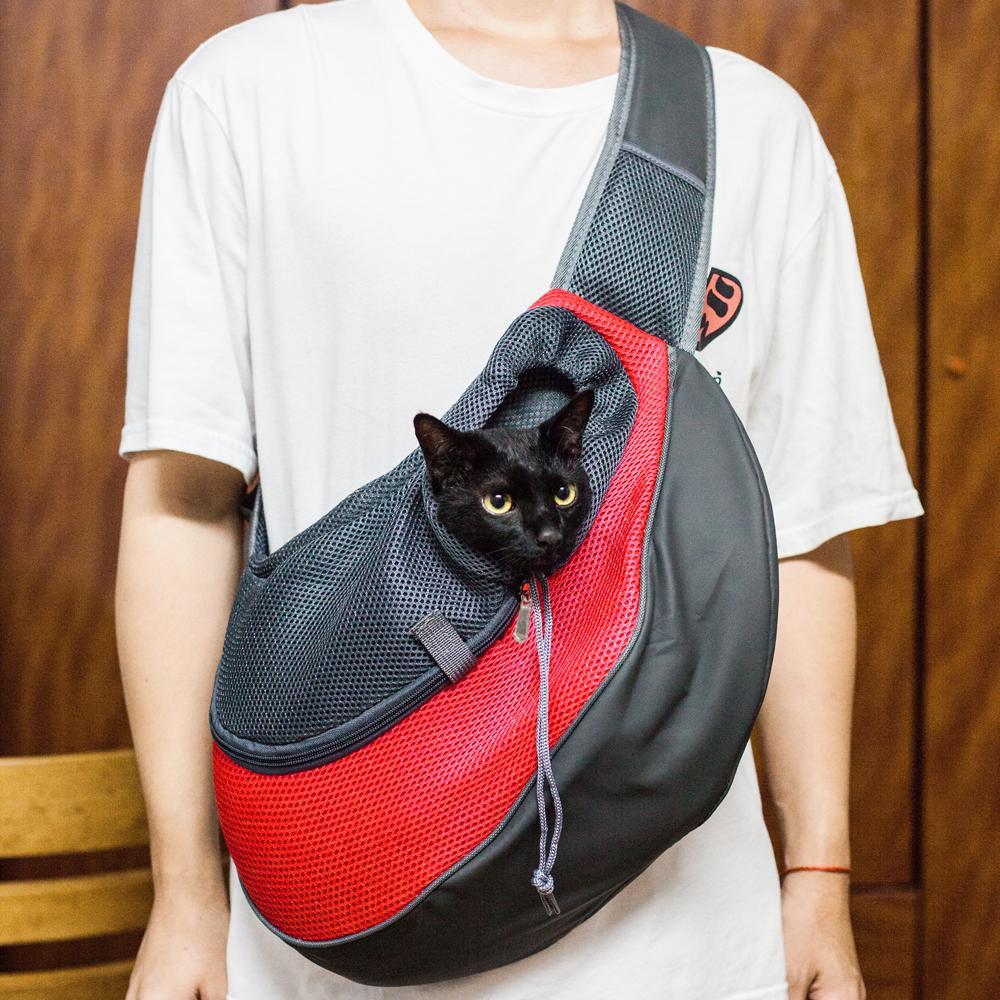
A cat sling, also known as a pet carrier sling bag is perfect for carrying your cat when going outdoors.
Since your three-legged cat will have trouble walking, they will seat cozily in the sling carrier until you get back to your car or house.
But you may want to train them first by using it around the house just to be sure they are comfortable before going outside.
Closing Thoughts
Taking care of a three-legged cat can be a huge challenge but as long as you have the right tools and resources, it will be easy.
Use the products and tips shared above and you will have an easy time.
Remember that three-legged cats have just as much love to give to their owners and can experience just as much happiness and live fulfilling lives as any other cat out there.
Related Posts:

Hi! I am Eleanor Price. I started this website after my cat, Louie, almost died from a case of botulism (a type of food poisoning often caused by bacteria that grow on food items). Turned out that my cat’s diet was the problem. I have made it my duty to provide the best information and recommendations about everything cat lovers need to know about their felines’ health and wellbeing. My goal is to find the most informative content on anything feline-related and share it with fellow hardworking kitty lovers.

